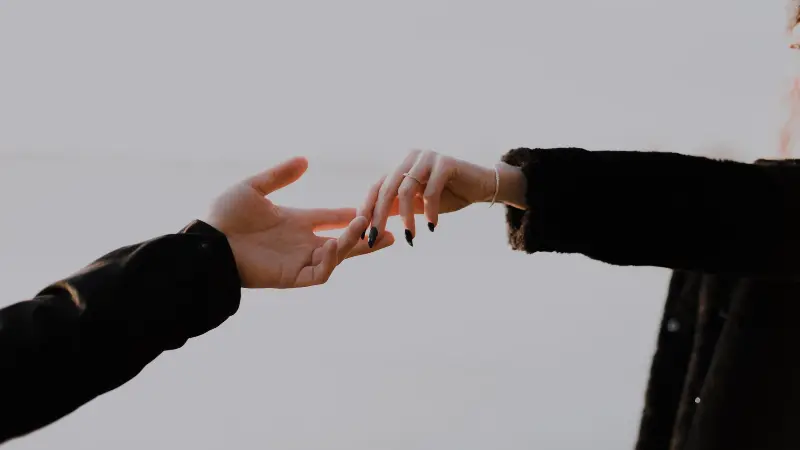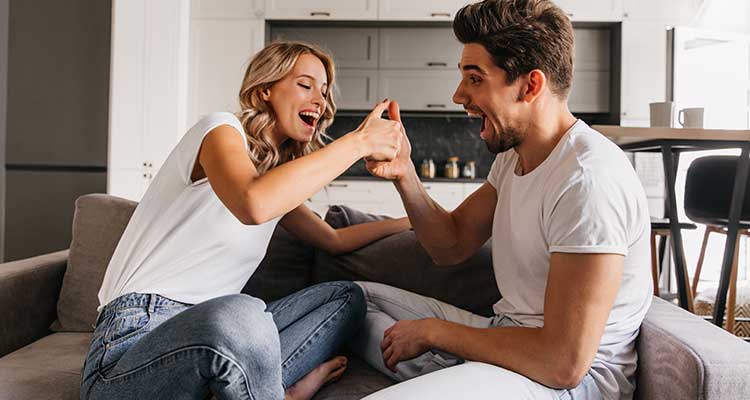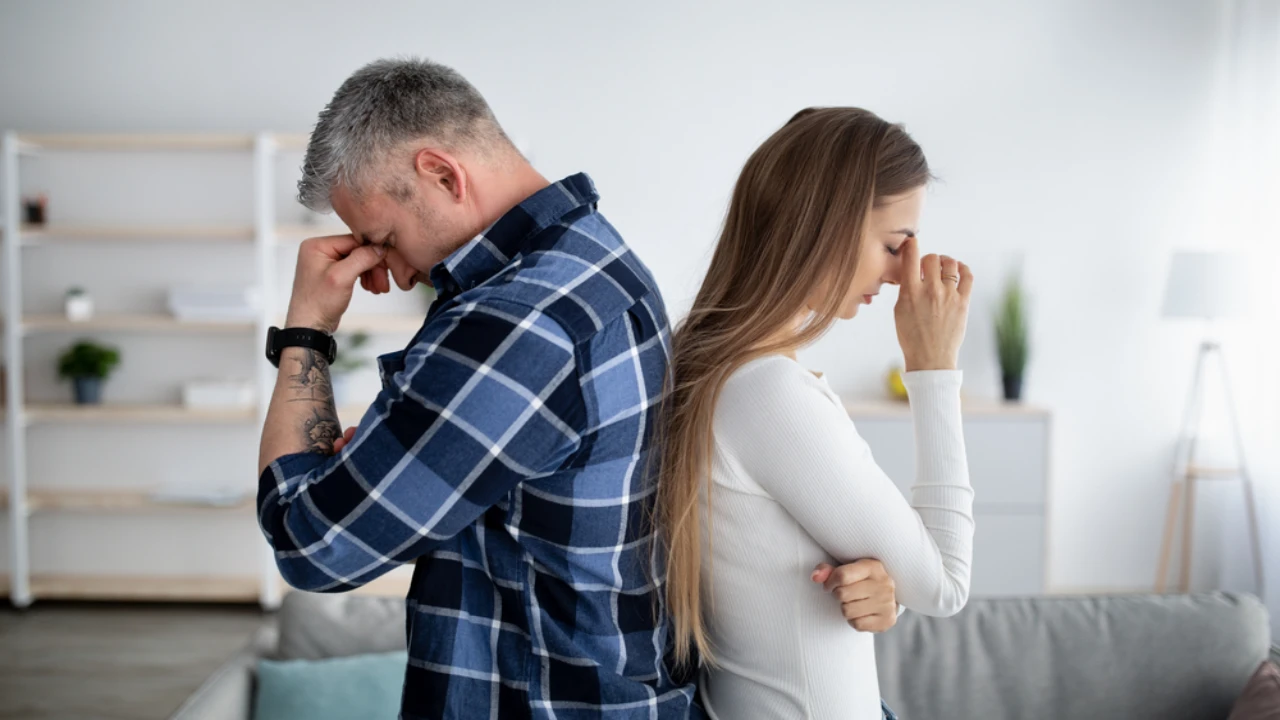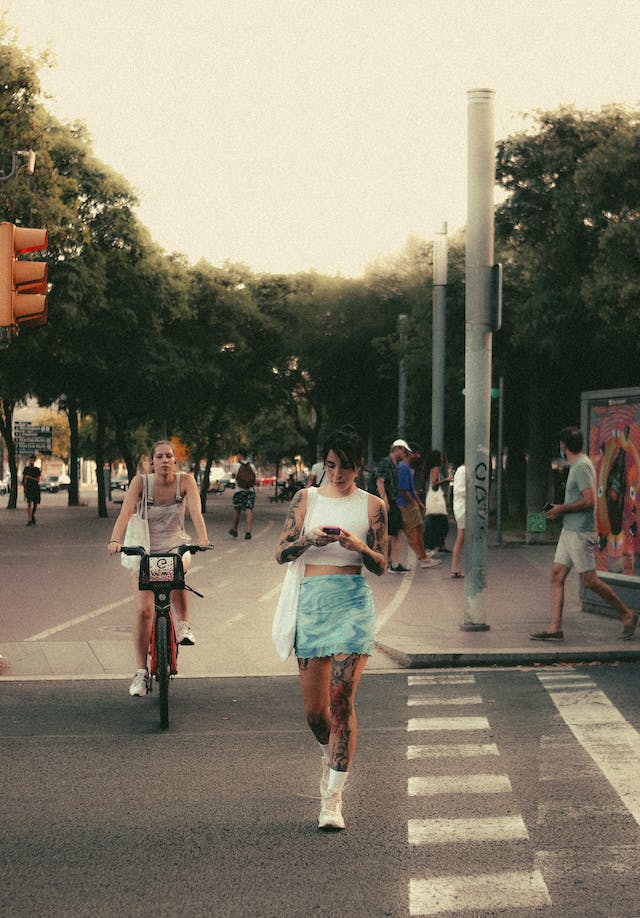Happiness
Episode 62: Staying Close While Self-Distancing
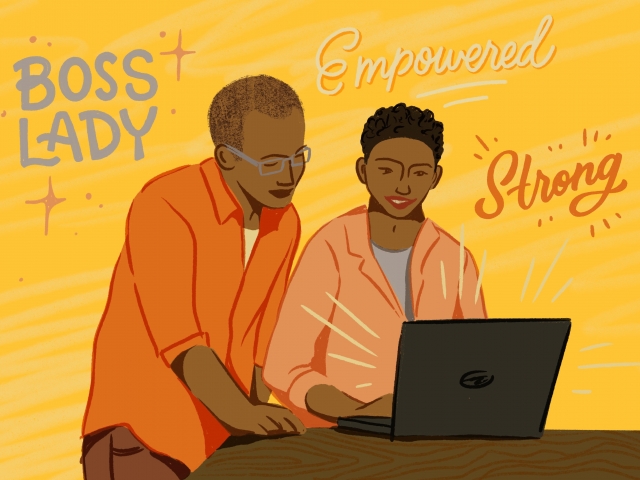
DACHER KELTNER Hi, it’s Dacher Keltner. Very often, our greatest challenges and trials in life—combat, natural disaster, economic trauma, mortality—return us to our nobler tendencies, and our sense of greater purpose. Yes, we have to watch out for the racism, xenophobia, and aggression that can arise during times like these, this moment of the Coronavirus, and to do so we have to hew more closely to our capacities for compassion, connection, and creativity.
As we record this, we’re in a studio on a vacated campus where I teach, UC Berkeley.
Many of us feel the fear of the spread of COVID 19. We are keeping our distance from others, who bring such strength and love to our lives. This social-distancing is crucial. It’s saving lives. But it’s also disrupting the very fabric of how we get along with others. Businesses are suffering, families are separated
Students I’ve spoken with feel the racist underpinnings of how the virus is named by many, or what social distancing means to them if they come from diverse backgrounds. And the economic consequences, and disease, which often hit the poorest hardest, may regrettably follow with law-like regularity.
We know, though, that the ideas and practices we share on The Science of Happiness are often activated during peril and trauma—we turn to others, we turn to things like gratitude and wonder, and strong bonds, to survive. And their benefits are most pronounced during such times.
We’re offering resources, articles and practices for people who are facing COVID-19 at greatergood.berkeley.edu/coronavirus
And for the next few months, The Science of Happiness is going to be sharing practices to help us with the complex changes brought about by our responses to Coronavirus, the social distancing, disrupted work, difficulties perhaps paying bills, and lack of physical contact.
We feel more committed now than ever to share science-tested practices that can help us feel calmer, happier, and more connected to loved ones.
Our guest this week is Jennifer Keitt. She’s the CEO of the Keitt Institute, a nonprofit that she started with her daughter to develop strong, whole and empowered women.
When we asked Jennifer to choose a practice to boost happiness in her life, she chose one that can make us feel more connected to others by manipulating spaces in our own homes and places of work.
Jennifer joins us today from her home studio in Georgia to tell us how the practice went.
Jennifer, thanks for joining us on The Science of Happiness.
JENNIFER KEITT Thank you. Thank you so much for having me.
DACHER KELTNER We asked you to choose a practice to bring more happiness in your life, and you chose the Reminders of Connectedness exercise. This practice walks you through the process of considering how you can add reminders of social connection to your home or your office or your classroom. So what it does is, you first, you look around your home and sort of see what kind of objects or words surround you.
DK 1:04:49 Next, it asks you to count how many of these objects or words or images are related to social connectedness.
DACHER KELTNER And then you notice whether there are spaces, empty walls where you might add things and make things that help fill those empty spaces with connection. And then finally, to think about how your furniture is actually arranged to either get people closer together or are not.
What did you see?
JENNIFER KEITT So the first thing that I did was really to take a moment to look around my office. I work from home and my sacred office space is really, really important to me. And I was really struck by this first step of what kinds of objects and words and images surround you. So, Dacher, for me, it’s I’ve got a bulletin board on all of my “sheros,” Angela Bassett and Viola Davis and pictures. Right. Of women. Powerful women that I, that I really aspire to be like, you know, to be these kind of boss babes. And then looking at my walls, I’m seeing a lot of ideas that connect me to myself. “I’m just a girl boss, building her empire,” it’s one of the favorite sayings on my walls. And so goes this idea when I was looking around that there’s a lot of ways that I’m not only connecting with others, but connecting with myself as well. And then step two, counting how many of these objects and words and images relate to social connectedness. And this is where I think I’m embarrassed because well over 20 or 25, I think I stopped about 25 or 30. Interacting words: community, together, friendship, a lot of that I found in my office, which was step two. And then you asked, step three, to notice whether there were empty walls or shelves where I could add new objects: no. There’s nothing, so I have to empty some things!
And then, step four, next time when I’m out shopping and looking through my belongings, looking for things that might help me to find objects that evoke more connection, maybe even in a subtle way. This has been challenging since doing the exercise because I’ve been doing this exercise in this very––spiral downward that we’ve been taking nationwide. So, so there really hasn’t been much, out shopping. It really hasn’t. Right. So, so that’s still something I’m looking forward to. And then finally, considering the furniture, all my furniture out of place. Well, in my office, it’s very much placed for connections. And even now, bringing in more and more chairs and more seating, because. My husband and myself, we’re doing a lot of family video conferencing. Last night we had a happy hour together with our children via video teleconference. So we’re actually moving through our lives. And this week I’m planning a virtual dinner, a virtual Sunday dinner for everyone. So everyone has their own food in their own place. But we’re all going to eat together. So I’m arranging furniture in my office and then that extends out into my home for way more communal situations to include the computer and my husband and myself. So it’s really, it’s a different time that we’re in right now.
DACHER KELTNER You know, we know from work by people like Naomi Eisenberger and Louisa Pavey that, you know, images of people seeing their faces, hearing their voices, the voice is this powerful basis or language of connection really makes us feel safe. And it sort of quiets the source of anxiety in our minds these days. You know, a lot of the people that I’m talking to, including a lot of my students, are really isolated, feeling lonely. I just got a paper recently that, the, you know, the quarantining that took place with the other epidemics actually leads to elevated depression and anxiety. Really worrisome. You know? What are some of the words of wisdom you offer to people who are wondering, like, how can I connect to my child who’s far away? How can I? They can connect to my aging parents. How can I connect to my community members? What would you say?
JENNIFER KEITT So for anyone that is under 30, right. Or even under 35, it is not. It’s a no brainer. Face time. And then other kinds of connectedness that happens with the push of a button. And so that idea that we are looking at each other. I think that’s that’s been more that’s been amped up more in the last several days, actually, for me than ever before. So it’s that face time and that live time. So we’re actually sitting down together. I mentioned, you know, the happy hour that I had with my kids yesterday. And spouses, their spouses as well. Just an hour of gathering together and, you know, beverage of choice. They’re all adults. So it’s very legal. And just coming together and talking. Right. But, and here’s, the big but my mom and my husband’s mom and others that have older folks who are not technologically savvy. Now we’re having to go to the telephone. A lot more phone calls that are happening. I know between me and my mom and my husband and his parents because my mom doesn’t even have Internet. So a lot of telephone calling because, again, live voice and hearing voice, I think reminds us of being connected that kind of way.
I just cannot stress enough: live, live, live. Using technology for what it’s really good at doing, which is bringing us together. And in this age, we can see.
DACHER KELTNER I’ve been offering my happiness class to Berkeley undergrads, you know, online now. And I had office hours and a bunch showed up and they are like, make sure you keep it live. Because even in the digital world, sensing that other people are there and sort of learning together is powerful.
JENNIFER KEITT Absolutely.
DACHER KELTNER I was talking to a UC Berkeley student yesterday who’s from China. Remarkably, she had seen the coronavirus break out in China. And then she came back to school in Berkeley and is seeing it break out in the United States. And she was here by herself without family and really struggling with that. And probably like many of our listeners or many people in the United States and elsewhere that, you know, being quarantined away from our social connections, away from the people we love very often. The reminders of connectedness practice becomes more poignant. So. What would you advise someone who’s suddenly in a situation like, “God, I can’t touch or reach out and be with these people. How can I use this practice to change my living circumstance?”
JENNIFER KEITT I think that creating a sacred space in a sacred time for you is going to be my my best advice. And here’s what I mean by that. At the end of the day, before Corona and even after Corona out, we are with ourselves more than any other beings. I can be in a home with my husband, but I am still inside of Jennifer. And so to me, this is the time, even when we are socially isolated, to reconnect and get to know you. So that means setting aside a specific amount of time and space. A very I know for me it’s got to be a beautiful space and maybe it’s with a candle or maybe it’s with something that’s fragrant. Maybe it’s with a faux flower. Or if you can’t get out and get real flowers or whatever is going to bring that positivity to that space that you’re going to be at. And what I’m talking about, a space could be in the closet. It could be a chair. It could be at a table. But really being intentional about checking in with you. I think that that is so critical. I’ve always thought that beforehand. But now I think it becomes even more critical because the self-talk that we have going on on the inside of us is going to make or break this experience for us. So I highly, highly, highly recommend or sacred self time that you kind of take. If it’s two minutes if its three minutes if It’s an hour. You’ve got to make sure that you’re intentionally keeping you up to speed, up to par by making sure the, you know, meditating or reading a book. But setting aside that time to check in with your heart so that you can make sure that you’re staying OK.
DACHER KELTNER You know, this trauma is getting us to rethink our own private space. And you’re suggesting, you know, we make it more sacred. What would you advise somebody? And in terms of like making a little space in their room more sacred. And have these reminders of connectedness?
JENNIFER KEITT So it’s this idea of making sure that we have, I’ll call them zones, right in our homes. It’s really difficult without structuring a space and a time for things. For many people, I know it is for me. So, for example, we know what we use the bathroom for. We know what we use the kitchen for. We know what we use the living space for. But now, because we’re all isolated, all of our spaces. Right. Become this big , it could become a big blob. What I’m suggesting is that people actually stake their claim would be, you know, if I had little ones at home. Maybe it’s a colorful beach towel, right. That they can just kind of hang out. I mean, here in Georgia, we do get a little bit of sun. So hanging out in front of my big windows.. So they could pretend like they’re at the beach or whatever the case may be. That’s a sacred space. And that’s how it becomes a sacred space for women. It might be, you know, honestly, a bathtub. I know my bathtub took me through a whole lot. When my kids were young So it’s a bubble bath. It might be a bubble bath. It might even be at midnight when everybody else is asleep. But that’s sacred space time. So what I’m suggesting is that we find these very intentional places, that we have sacred items that really bring us instantly into that place of being mindful, being compassionate, decompressing, de-stressing, thinking about how we are thinking and how we are feeling. And if you are alone in your house or in your space and you don’t have that kind of connectedness, you still could make up a space and a place for yourself that’s uniquely your own, that you say what I get into this space. It’s going to only be about me and making sure that I’m OK. Whether you’re taking a book with you or magazine with you, or if you’re listening to your, you know, your music or whatever, the case may be being intentional about checking in on yourself.
DACHER KELTNER So, Jennifer, thank you for being on our show and for all the wisdom you have about doing the Reminders of Connectedness practice.
JENNIFER KEITT Thank you for having me.
******
DACHER KELTNER Humans have a strong propensity for kindness and generosity it’s a central theme in the science of happiness, sometimes we just needs to be nudged, as happens in the reminders of connectedness practice.
Melinda Carpenter, a professor of developmental psychology at the University of St. Andrews in the U.K., wanted to see if that was the case for babies, too.
She conducted an experiment to see if basic reminders of connectedness could spark kindness in babies as young as 18 months old.
MELINDA CARPENTER So what we did was show them eight different photographs of familiar household objects in the foreground.
DACHER KELTNER A teapot, a shoe, a mug, a clock—things like that.
And in the background of their photographs we had two little wooden dolls standing in a close affiliative relationship together. So they were standing face to face looking at and smiling at each other.
DACHER KELTNER But the other kids in the study saw either two stacks of blocks, or a single doll standing alone, or two dolls turned away from one another. Again, these were all in the background of a picture that had a household item in the foreground.
Afterwards, Melinda and her team did a Helping Test. An experimenter came in the room holding a box and six wooden sticks in her hands. She then knelt down at a little child-sized table and “accidentally” let the sticks fall to the floor.
MELINDA CARPENTER So she started reaching towards the sticks unsuccessfully and saying things like oh my sticks they’ve fallen on the floor. And then if the infant still hadn’t helped she said oh my sticks I need them back. And then finally at the end if they hadn’t helped yet she asked them, “Can you help me please?”
This was the 18-month-olds’ chance to help… and some did, much more than others. The kids who saw the image with the dolls facing each other in the background - what Melinda calls ‘the Together condition’ were much more likely to help pick up the sticks than the other kids.
MELINDA CARPENTER The infants in the Together condition helped three times as often as kids in any of the other conditions.
All it took to get them to help others—what researchers call “prosocial behavior”—was a subtle reminder of connection and affiliation between people—in this case, a simple picture… with two dolls facing each other all the way in the background.
In our minds, in our brains we have a link, an association between affiliation to the group and pro social behavior. And so if we can cue affiliation then this will make pro social behavior more likely to occur.
When we create reminders of social connection in our spaces, we disrupt our tendency to focus on ourselves and our problems, and we reorient our attention to focus on other people. And that’s even true for young kids, at just 18 months old.
Charles Darwin and his holiness the Dali Lama both believe sympathy is our strongest instinct, but it’s really up to us to create the environments that allow us to express that potential.
DACHER KELTNER If you’d like to try doing the Reminders of Connectedness practice, visit our Greater Good in Action website at ggia.berkeley.edu.
And as we mentioned earlier in the show, we also have practices, resources, and articles for individuals, parents, and educators facing COVID-19 at greatergood.berkeley.edu/coronavirus
Please share with us what’s inspiring you using the hashtag #HappinessPod or emailing us at greater@berkeley.edu.
I’m Dacher Keltner, thanks for joining us on The Science of Happiness.
Our podcast is a co-production of UC Berkeley’s Greater Good Science Center and PRX. Our senior producer is Shuka Kalantari. Production assistance is from Jennie Cataldo and Ben Manilla of BMP Audio. Our associate producers are Brett Simpson and Ariella Markowitz. Our executive producer is Jane Park. Our editor-in-chief is Jason Marsh. Our science director is Emiliana Simon-Thomas. Special thanks to UC Berkeley’s Graduate School of Journalism.

